Cupping History
You probably know a little something about cupping now that it has been in the media these days, Olympic and sports athletes like, New England Patriots linebacker James Harrison, No.1 Womens Tennis Pro Serena Williams not to mention Hollywood stars, like Gwyneth Paltrow, David Arquette, Justin Bieber, Kim Kardashian who has her FACE cupped.
Live Example of Athletes in the Rio Olympic Games that used traditional Chinese Medicine, has now become one of the most talked-about topics when globally acclaimed athletes Michael Phelps and Wang Qun were seen participating with cupping marks on their bodies. Cupping therapy might be trendy now, but it’s not new.
It dates back to ancient Egyptian, Chinese, and Middle Eastern cultures. One of the oldest medical textbooks in the world, the Ebers Papyrus, describes how the ancient Egyptians used cupping therapy in 1,550 B.C.
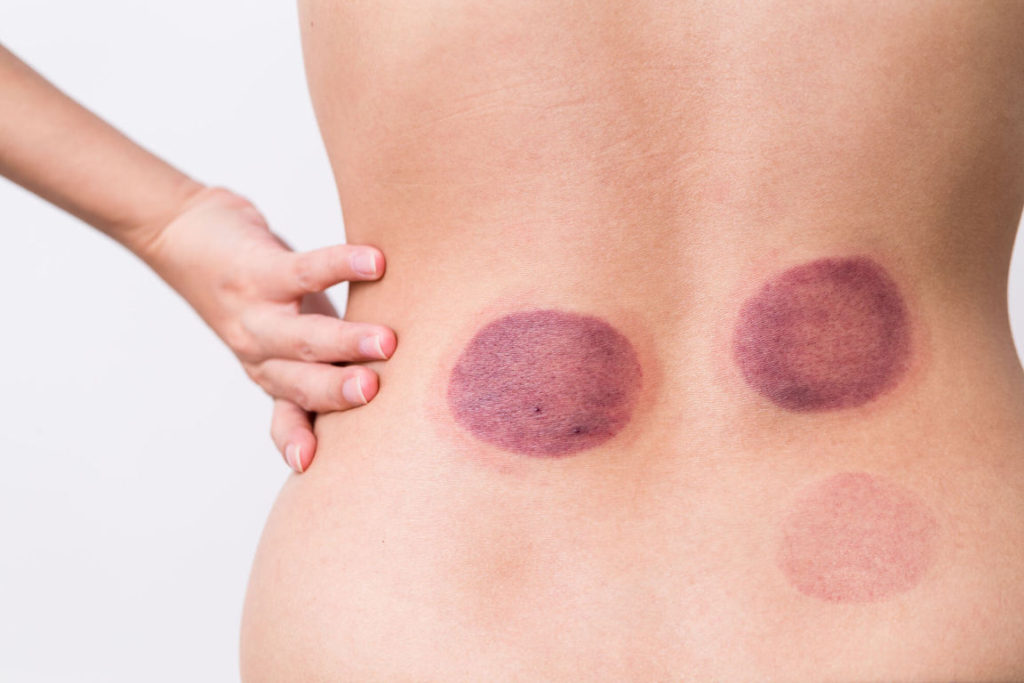
What Is Cupping?
Cupping involves the use of vacuum-suctioned glass cups on the body to bring circulation to the area, detoxify the skin, break up fascial adhesions, and relax tight muscles. In ancient times, tribes utilized animal horns, bamboo, bones, nuts, seashells and gourds as suction devices to purge bites, infections and skin lesions from the body.
Now, cups are usually made from glass. By quickly heating the inside of the glass cups with fire, suction is created when placed on the skin. Although, there are several ways to facilitate stationary cupping therapy, fire cupping is most traditionally used. Typically, 4 to 8 cups are used adhering to the skin for about 15 to 20 minutes. The negative pressure created by the suction stimulates the local acupuncture point and increases the blood flow through the meridian to loosen up tight muscles, to relieve pain, detoxify and re-balance organ functions.
Common Cupping Uses
The back, shoulders, arms, shoulders, legs, or feet. Once the cups are suctioned onto the body, you will feel a tight sensation from the skin being pulled into the cup. Because cupping brings circulation to the surface, there is usually some color change or bruising under the skin – either pink or purple that can last for up to a week after the treatment (the famous and now trendy cupping marks!) While the color does change, these areas are rarely painful like normal bruises. Cupping is especially great for tight, sore muscles and fascia, detoxifying the skin, poor circulation to the tissues, as well as respiratory conditions like asthma, bronchitis, and others…

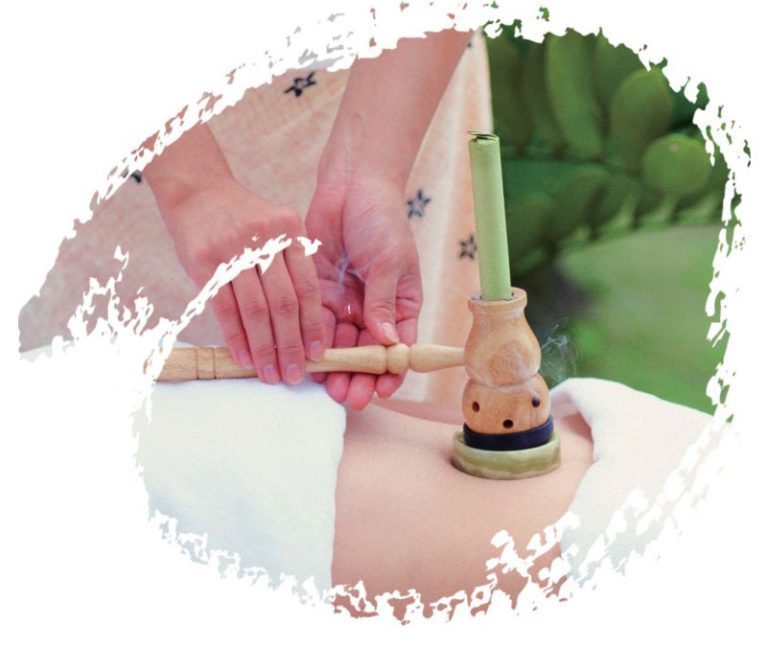
Moxibustion History
Moxibustion is a kind of external treatment, it usually bakes acupoints with burning moxa wool and can dredge meridians and regulate qi-blood and has been used to prevent and cure diseases for more than 2500 years. Zuo Zhuan of the pre-Qin dynasty in China, which recorded a disease discussion occurred in 581 B.C., is considered to be the earliest literature of moxibustion.
What Is Moxibustion?
Moxibustion was always the traditional accompaniment to acupuncture. It involves the burning of the herb Mugwort on acupuncture points. But, don’t worry, it won’t burn your skin! It often feels like a gradual increase in warmth at the acupuncture point over the course of your treatment.
Moxibustion is used to warm cold parts of the body, move Gi and circulation, and add Gi to the body. It is especially helpful for those who are tired, depleted, have poor circulation, or are chronically cold-natured. It’s naturally safe for anyone who has normal sensation in the area the moxa is being applied to.
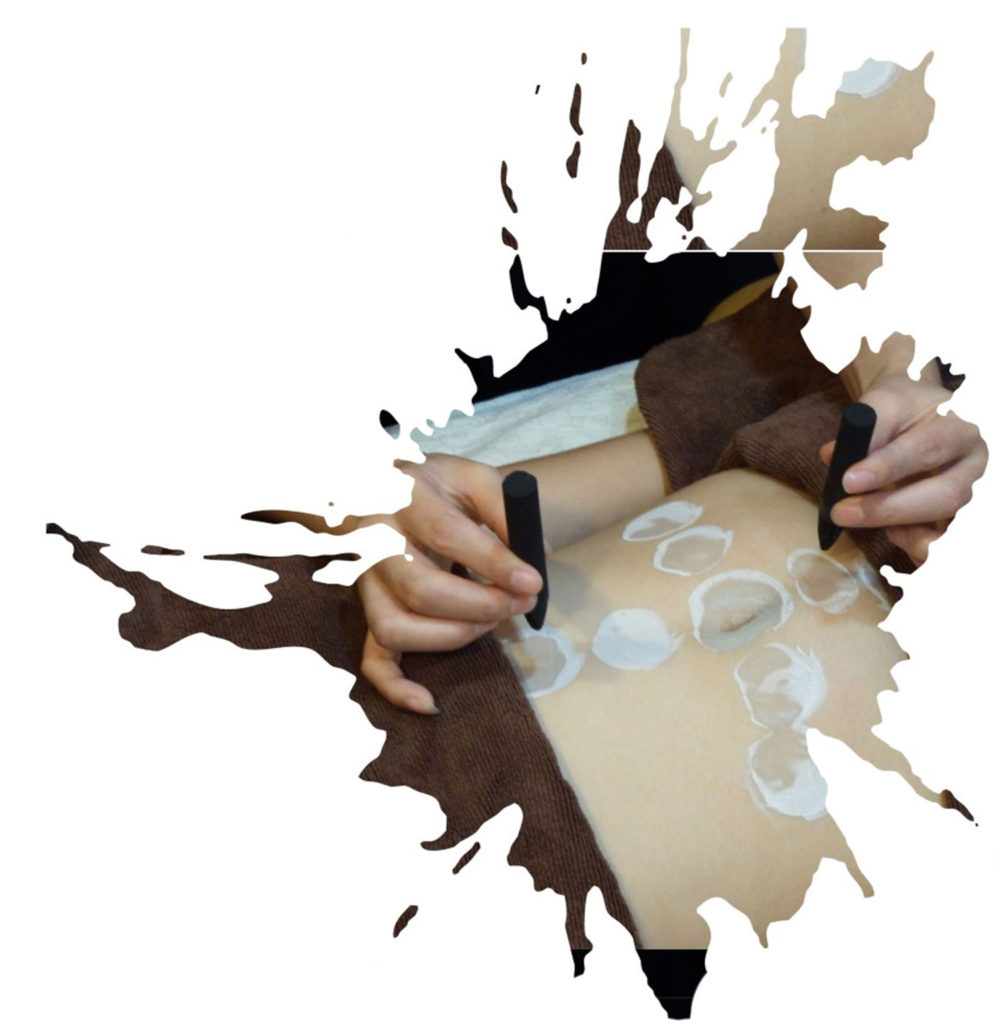
Moxibustion Uses
Moxibustion is remarkably effective, especially in patients with cold constitutions. Used on the acupuncture point, Stomach 36 that’s believed to prevent diseases and maintain health. In ancient China, this technique is known as reverse moxibustion. Even if a person is relatively healthy, regular therapy on this point can invigorate healthy Qi and strengthen the immune system, thus increasing longevity. Maybe this is why the point has been nicknamed the “longevity point.”
In China, moxibustion is regularly used to treat heavy menstrual bleeding and uterine bleeding and increase blood circulation to the pelvic area to treat menstrual pain and infertility. Many alternative medicine proponents claim that moxibustion can help treat health problems like arthritis, migraine headaches, hot flashes, menstrual cramps, digestive problems, ulcers, and even some cancers.

Gua-Sha History
GuaSha is a stone massage has been used by Chinese Medicine since the Ming Dynasty about 700 years ago, between 1368 and 1644. When people fell ill or entered a coma, hands or stones, and household materials such as coins or tins were used to massage their body parts to help reduce their illnesses’ side effects and symptoms.
Chinese believe that gua-sha frees unhealthy bodily matter from blood stasis within sore, fatigued, stiff, or wounded muscle areas to spur new oxygenated blood flow to the locations, thus promoting metabolic cell repair, regeneration, healing, and recovery.
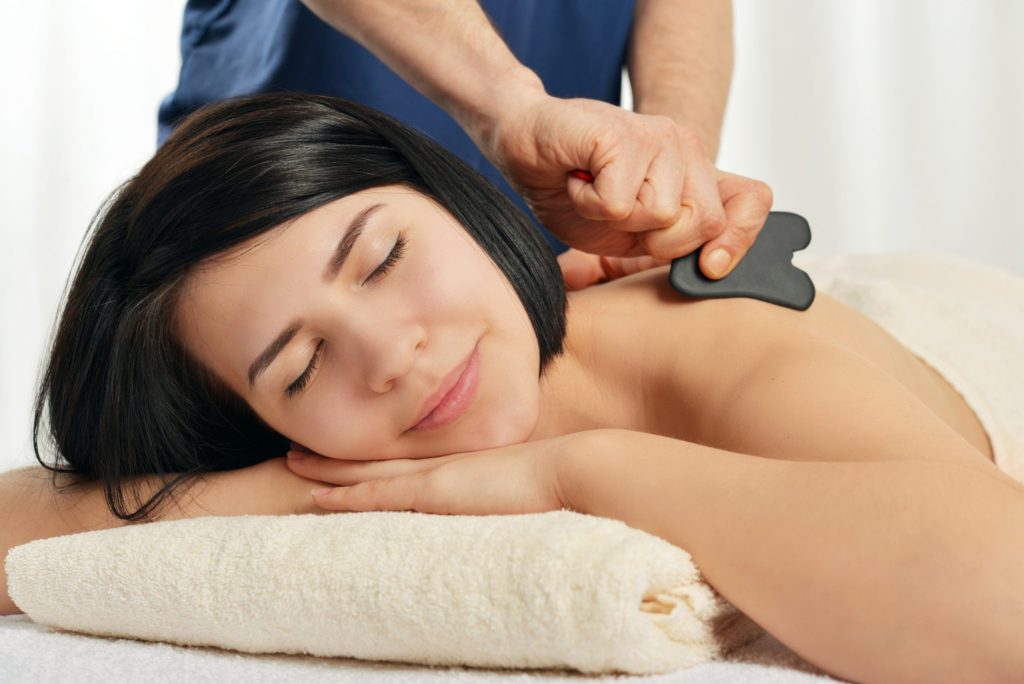
What Is Gua-Sha?
Pronounced as Gwah-Shah, it is defined in two parts — “Gua” means “scrape” “Sha” means to “sand” you could say it is a technique of scraping away disease, fever, or some type of sickness from the body. It is a healing method emulated from traditional East Asian medicine. It used to be a conventional natural therapy that involves using a “spatula” made from buffalo horns to massage the skin.
Gua-Sha tools have been modified and modernized, made of more suitable materials such as jade or rose quartz to massage the body surfaces to relax stiff muscles while relieving pain and tension, treating specific illnesses, and improving blood circulation. It can create minor bruises, which appear as purple or red marks known as “Petechiae” or “sha”.
Gua-Sha Uses
Enhances the movement of lymphatic fluids and knots in the face, neck, and shoulders and breaks down muscle tension. Reduces facial lines and can be used almost like a gentle, natural face-lift, resulting in sharper cheekbones and less puffy eyes. Increases blood circulation while lifting and firming the skin for a smoother complexion and more sculpted features.
It is also known to relieve the side effects of Migraine headaches, Neck pain, perimenopausal syndrome, Hepatitis B, Breast engorgement, Tourette syndrome, etc. Because it decreases inflammation on the skin, it is often used to treat sicknesses that cause chronic pains like arthritis and fibromyalgia and trigger muscle and joint pains.
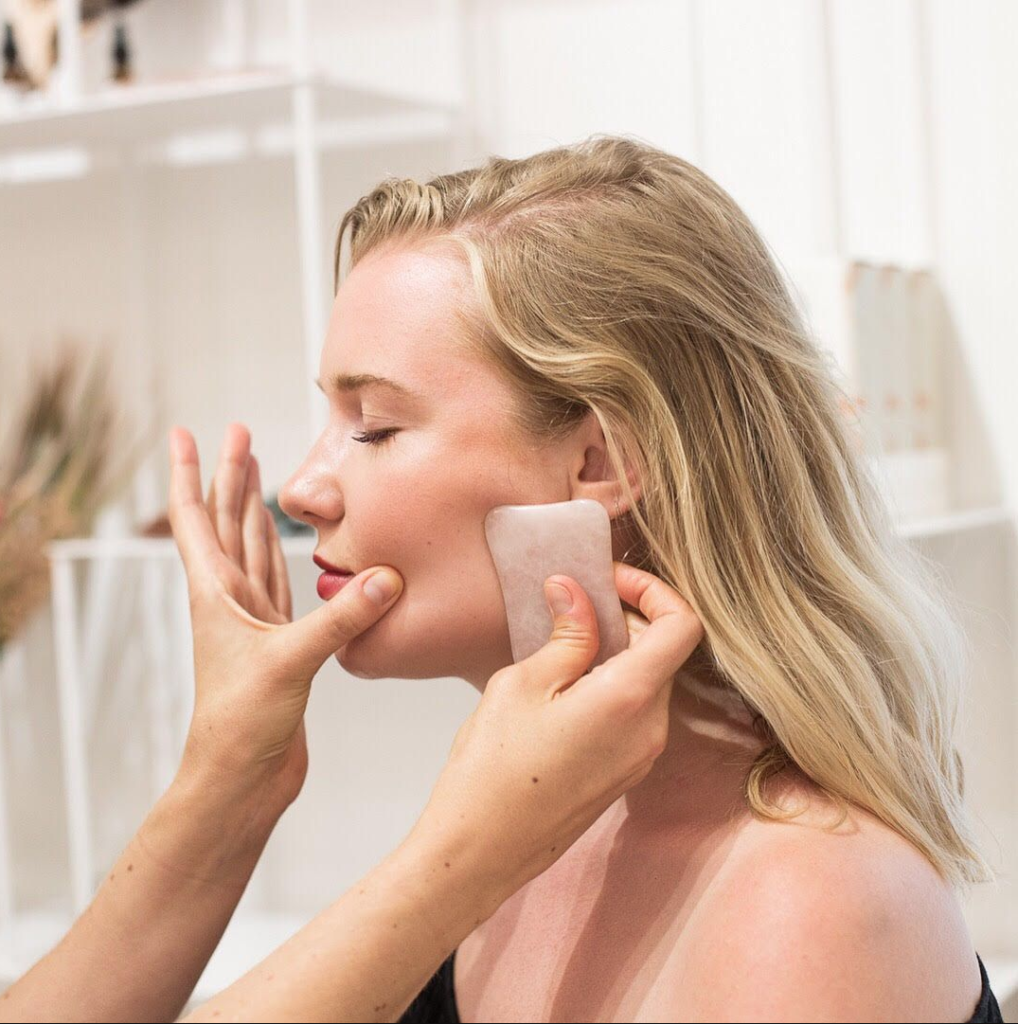
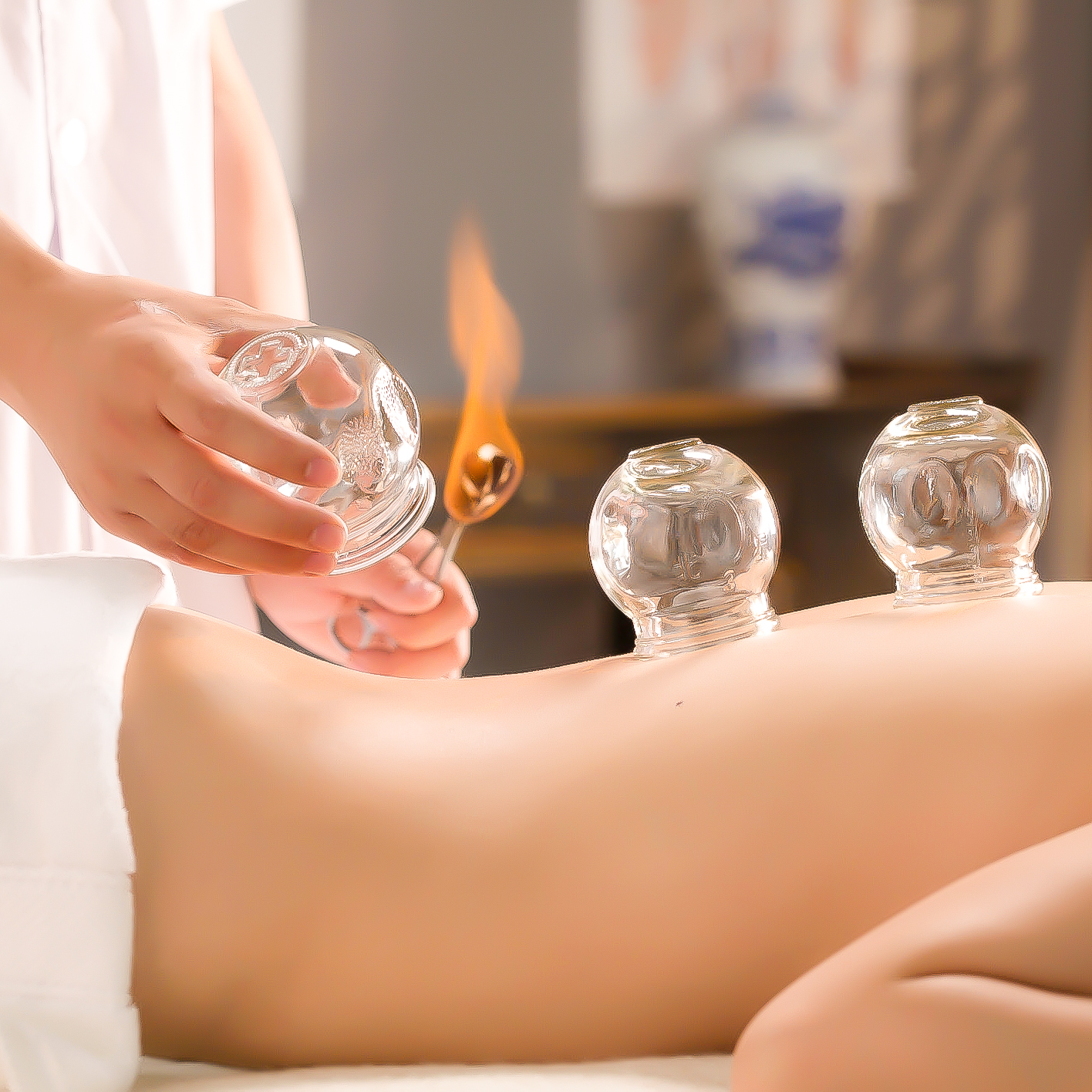
Cupping Therapy
Cupping is one of the oldest treatments used in Chinese medicine, and today it still provides the benefits of increased blood flow, improves the flow of energy, relaxing muscles, removes inflammation and toxins, promotes healing, and alleviates pain.
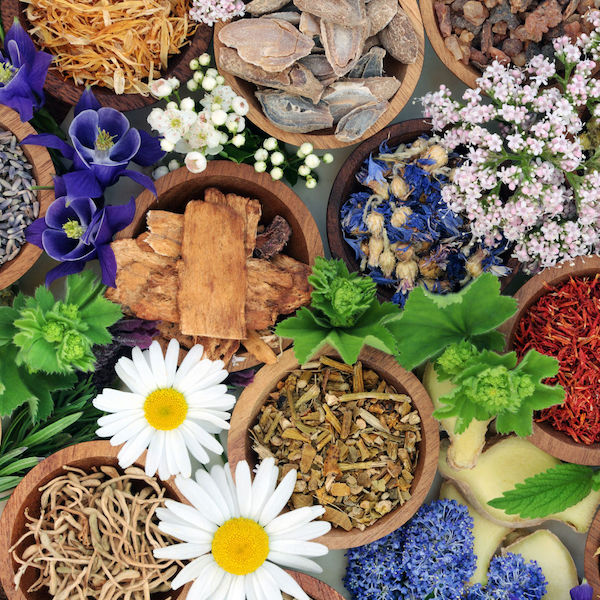
Chinese Herbal Medicine
We use over 7,000 medical herbs and spices with over 100,000 formulas passed down through generations – find out more about how Chinese Herbal remedies are customized just for your body and illnesses
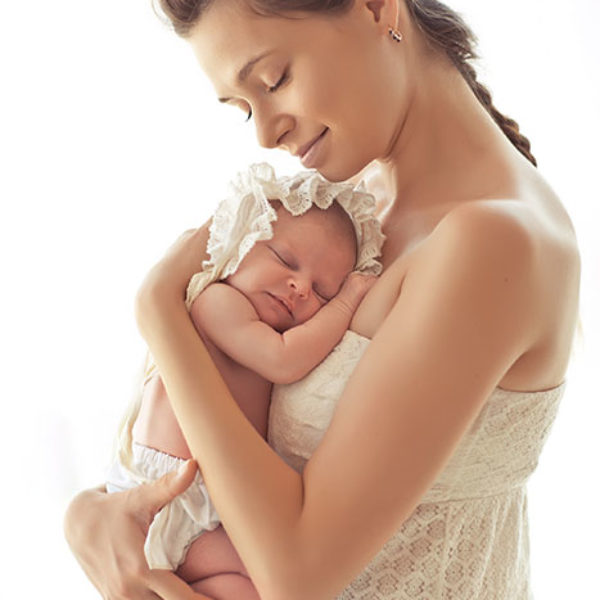
Fertility Acupuncture
One of our specialties is integrative reproductive medicine, including fertility, pregnancy, and women’s wellness care. Acupuncture can be used alone or in conjunction with IUI or IVF, to improve fertility and increase the chance of a successful pregnancy.
